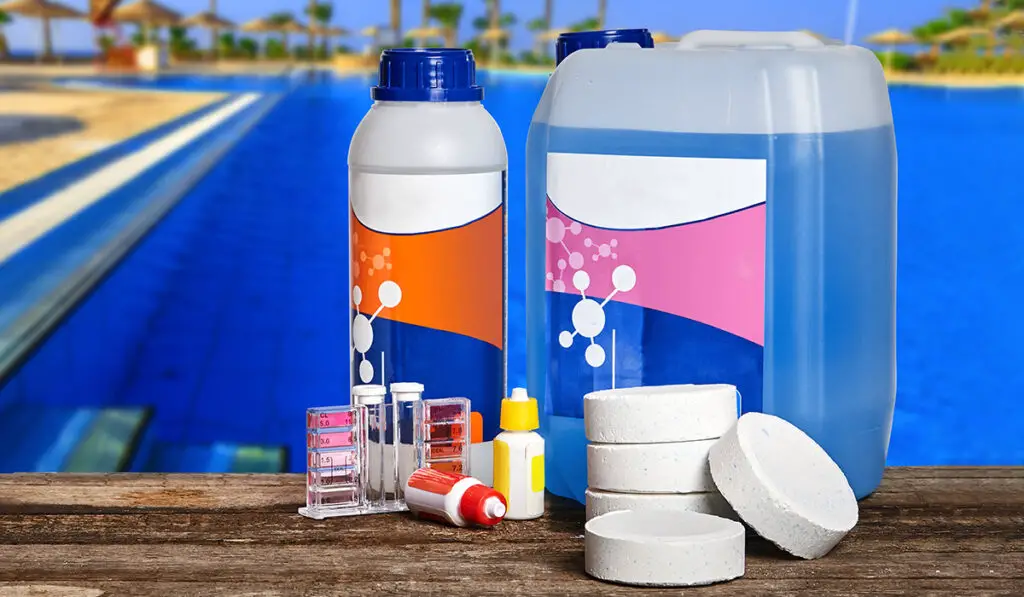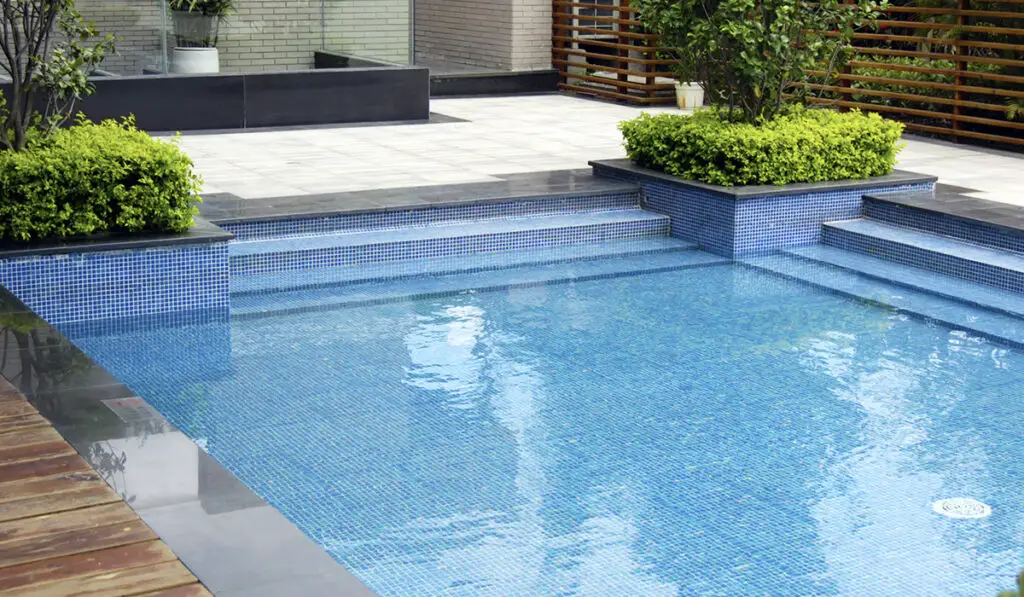Pools are an investment of time and money. Many steps go into taking care of a pool. There are chemicals to add, filters to clean, water quality to check, and a pool clarifier to add. If you don’t know what a pool clarifier is, don’t worry – we have the answer.
A pool clarifier is a type of coagulant added to the water in your pool. Once in the water, it clumps particles into larger ones to make it easier for the filter to remove them from the water. Clarifiers are helpful to keep your pool clean and sparkling for an enjoyable swim.
To understand how to use a pool clarifier, you need to know what it is, how often it should go inside the pool, and more. Let’s look at the pool clarifier and everything that goes with its use.
What is a Pool Clarifier?

A pool clarifier is a chemical that can be part of your pool maintenance and cleaning routine. It’s made of positively-charged molecules, which are attracted to negative particles. Almost all water-clouding particles are negative, ensuring they’ll stick to the clarifier.
This product is like a magnet. Once added to your water, it will coagulate almost on contact. As particles attach, the coagulated ball grows to a size the filter easily picks up.
Clarifiers are ideal for pools in the spring when there are more particles in the air than usual. They will also keep pools with poor circulation or filtration clean and clear for safe swimming even when a part of the pool isn’t working as well as it should.
How Often Should You Use a Pool Clarifier?
There is no regular schedule for adding clarifiers. Unlike other chemicals, it shouldn’t go in your pool every day. Pool clarifiers should be used rarely and only if your pool is cloudy. It is a way to clear the water, not balance the chemicals inside.
The frequency of adding pool clarifiers should never be more than once a week. If you find your pool cloudy more often than once a week, consider hiring a professional to check out your filtration system and determine if there is something wrong.
Poor filtration or a bad balance of chemicals might be the root of your cloudy pool. If that’s the case, a pool clarifier won’t be helpful to get your pool back in a beautiful, swimmable state. Don’t use clarifiers more than is necessary, or you could cause dangerous swimming conditions.
How Do You Use a Pool Clarifier?
Although it might seem simple, there’s more work than people think when adding a pool clarifier to your water. Address issues other than cloudy water before adding clarifiers, as you won’t see any results if you don’t. For example, pool clarifiers can’t remove algae and dirt.
Here are the steps to follow to add clarifiers to your pool:
- Clean your pool by skimming, brushing, and vacuuming
- Test the pool water and balance chemicals if necessary
- Shock the water if there is any algae or growths
- Keep the filter running all day and night
- Up your pool’s circulation
- Add clarifier
Ensure you take all these steps before adding the liquid.
You can’t just drop a clarifier into your pool and hope for the best. It should be cleaned, balanced, and shocked to remove any unnecessary particles before the coagulant does its thing. The extra effort will make it more effective in the long run.
When Not to Use Pool Clarifier
Pool clarifier is helpful in some instances, but there are other times when you should avoid it! Adding it when it isn’t needed isn’t just unhelpful for your pool and a waste of time – it also adds more chemicals to your pool system. If in doubt, check your pool before adding anything.
Here are a few times you should not use a pool clarifier:
- Right after shocking the pool
- If it’s coated in algae or filled with dirt
- If you’ve already done it once during the week
- If the clarifier does not work after multiple uses
Avoid pool clarifiers a million times a week, and stop using them if you don’t notice a clear difference. A pool clarifier will only help with certain particles. If you don’t see the cloudiness going away, you have a different issue in the system.
Pool Clarifier vs. Flocculant: What’s the Difference?
An alternative to a clarifier is a pool flocculant. For those newer to the pool world, it might be tricky to tell the difference between the products. There is one big thing that separates these products from each other.
The pool clarifier coagulates particles from microscopic particles into small balls. These then are much easier to be picked up by the filter, removing gross items and clearing up your water. It’s pretty easy to use a clarifier, no matter how much you know about pools.
A flocculant also coagulates particles, but it groups them into much larger clumps. These clumps sink to the bottom, ready for a vacuum to pick them up and remove them from the water. Flocculant is a little trickier to use than a pool clarifier.
If you want something powerful and are comfortable with flocculant, it will work much faster. However, a clarifier is less work and can be used more often than a flocculant.
Can You Swim After Using a Pool Clarifier?

Clarifier is considered a swim-safe chemical, which means it won’t hurt a person who jumps in the water while the clarifier is still mingling around in the liquid.
Of course, it’s still vital to let the clarifier sit for a little while to take in all possible particles. Give it at least twenty minutes before enjoying the crystal-clear water.
If you jump in before the clarifier works, it could be dangerous. If the cloudiness doesn’t disappear, you won’t be able to see someone drowning at the bottom and could be at risk of exposure to bacteria buildup.
What Happens If You Put Too Much Pool Clarifier In Your Pool?
If you add too much clarifier to your pool, it will fill your filter and clog it up. Clarifiers are made to coagulate, so too much will gather together and become jammed in vital filtration components – which means more work for you!
Too much clarifier could force you to drain your pool. Read the directions, add the right amount, and wait for a clear pool.
Can You Add Chlorine and Clarifier At The Same Time?
No matter what, never add two chemicals to your pool water at the same time. However, if there is chlorine already present in the pool, it’s okay to add a clarifier to the water. Adding them at the same time will reduce the effectiveness of both.
The best thing you can do is add chlorine first, then wait a day or two to allow it to sit in the water. Then, add the clarifier. It might seem like a long wait, but it’s worth it to hold onto each chemical’s properties and effectiveness levels.
How Long Does It Take A Clarifier To Work In A Pool?
Although the results of the clarifier are spectacular, it might take a little while to actually notice the results. In some cases, it might be two to three days before you note any notably clear water! It’s vital to be patient as chemical coagulation occurs and works its way through the pool.
If you want a clean pool faster, you might be better off with a flocculant. It will work quickly to gather balls on the bottom for more efficient cleaning. However, it requires more work on your end as you will need to vacuum before you swim again.
